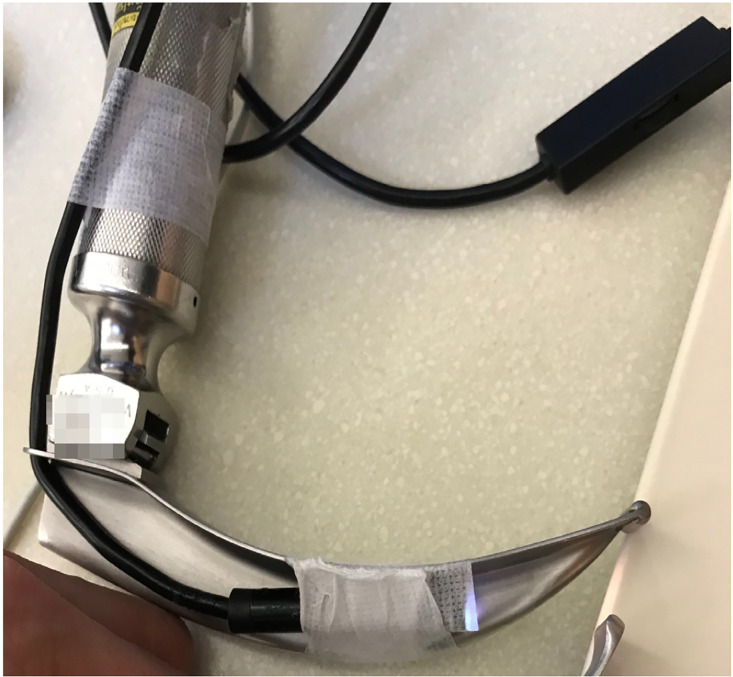| Author | Affiliation |
|---|---|
| Jutamas Saoraya, MD | Chulalongkorn University, Faculty of Medicine, Division of Academic Affairs, Bangkok, Thailand; King Chulalongkorn Memorial Hospital, Department of Emergency Medicine, The Thai Red Cross Society, Bangkok, Thailand |
| Khrongwong Musikatavorn, MD | King Chulalongkorn Memorial Hospital, Department of Emergency Medicine, The Thai Red Cross Society, Bangkok, Thailand; Chulalongkorn University, Faculty of Medicine, Department of Medicine, Bangkok, Thailand |
| Jariya Sereeyotin, MD | Chulalongkorn University, Faculty of Medicine, Bangkok, Thailand; King Chulalongkorn Memorial Hospital, Department of Anesthesiology, Division of Critical Care,The Thai Red Cross Society, Bangkok, Thailand |
To the Editor
As the novel coronavirus 2019 (COVID-19) has rapidly become a global pandemic, emergency physicians worldwide play essential roles in the frontline management of critically ill patients with COVID-19. In emergency airway management, video laryngoscopes (VL) are recommended over direct laryngoscopy to minimize healthcare worker exposure to aerosolized particles.1 However, the VL may be too expensive or unavailable in resource-limited settings, where it is needed to protect the limited number of healthcare providers. We, therefore, reintroduce the idea of creating a low-cost VL from the direct laryngoscope (DL) and a low-cost (approximately $8) smartphone borescope, which is widely available to purchase online. The borescope camera should be secured at the same level as the light sources of the Macintosh blade for the optimal view (Figure, Video). Previous studies of such “Do-It-Yourself” (DIY) VL demonstrated an improved glottic view and increased ease of use in simulated settings for novices and may be comparable to the commercial VL for experienced intubators.2,3 Moreover, if the capability exists, the disposable blade could be produced from 3D printing.2

Emphasis should be on proper training with the DIY VL, as intubation with VL requires different skills when compared with DL and commercial VL.4,5 Our experience with the DIY VL has led to the following observations. First, we found the device was easy to use, even by novices. Importantly, instead of connecting to a smartphone, the device should be joined with a tablet to provide a larger screen to facilitate visualization. Second, since the borescope has a cylindrical shape, it easily rotates, so the camera should be aligned correctly and tightly secured. If the camera is misaligned or rotated during intubation, the laryngoscopic view on the screen will be oblique or even turned upside down, which may lead to an unsuccessful intubation attempt. Lastly, we noted that the borescope functioned well after it was thoroughly cleaned with detergent and water and disinfected with ortho-phthalaldehyde, our general disinfection protocol. However, if there is a potential concern about contamination or provider safety, the borescope can be discarded as a single-use apparatus since the cost is affordable.
In conclusion, we believe DIY VL is an acceptable option in clinical settings with limited resources in response to emergency endotracheal intubation in the COVID-19 pandemic.
Footnotes
Section Editor: Gabriel Wardi, MD
Full text available through open access at http://escholarship.org/uc/uciem_westjem
Disclaimer: Due to the rapidly evolving nature of this outbreak, and in the interests of rapid dissemination of reliable, actionable information, this paper went through expedited peer review. Additionally, information should be considered current only at the time of publication and may evolve as the science develops.
Address for Correspondence: Jutamas Saoraya, MD, Chulalongkorn University, Faculty of Medicine, Division of Academic Affairs, 1873 Rama IV Road, Pathumwan, Bangkok 10330, Thailand. Email: jutamas.sa@chula.ac.th. 7 / 2020; 21:817 – 818
Submission history: Revision received April 23, 2020; Submitted May 10, 2020; Accepted May 12, 2020
Conflicts of Interest: By the WestJEM article submission agreement, all authors are required to disclose all affiliations, funding sources and financial or management relationships that could be perceived as potential sources of bias. No author has professional or financial relationships with any companies that are relevant to this study. There are no conflicts of interest or sources of funding to declare.
REFERENCES
1. Edelson DP, Comilla S, Paul C, et al. Interim guidance for life support for COVID-19. Circulation. 2020.
2. John AV, John SC, Lambert C. Development and testing of a low cost videolaryngoscope in a resource limited setting. Ann Glob Health. 2017;1(83):4-5.
3. Cohen Y, Rubinstein RM, Berkenstadt H. A do-it-yourself videolaryngoscope for under 25$: a solution for lower income countries?. Anesth Analg. 2016;123(3S):248-9.
4. Levitan RM, Heitz JW, Sweeney M, Cooper RM. The complexities of tracheal intubation with direct laryngoscopy and alternative intubation devices. Ann Emerg Med. 2011;57(3):240-7.
5. Cortellazzi P, Caldiroli D, Byrne A, et al. Defining and developing expertise in tracheal intubation using a GlideScope® for anaesthetists with expertise in Macintosh direct laryngoscopy: an in-vivo longitudinal study. Anaesthesia. 2015;70(3):290-5.
SUPPLEMENTARY MATERIAL
The video shows a view from the low-cost videolaryngoscope during simulated intubation. Please see Supplementary File.


